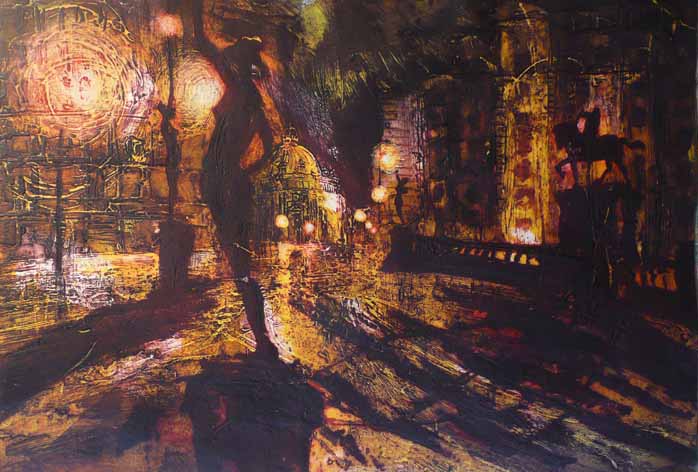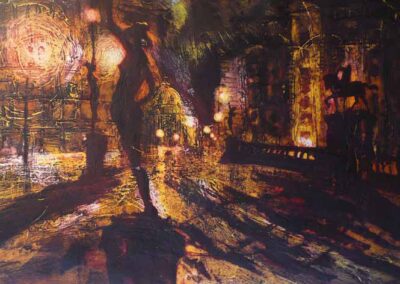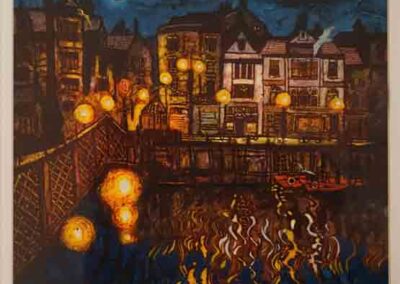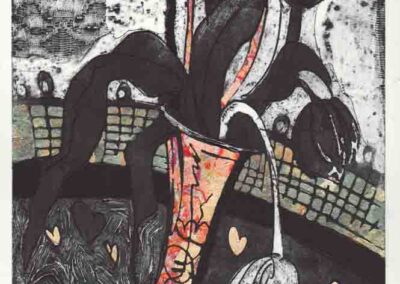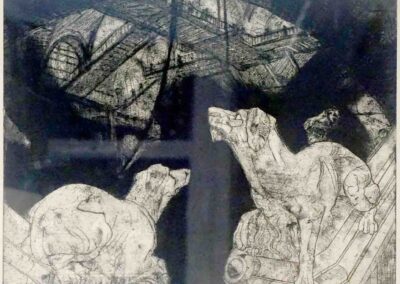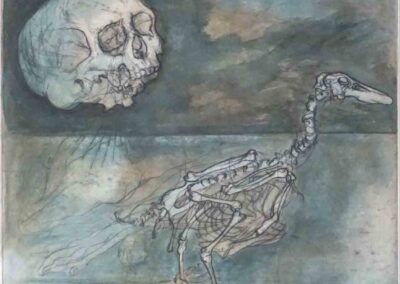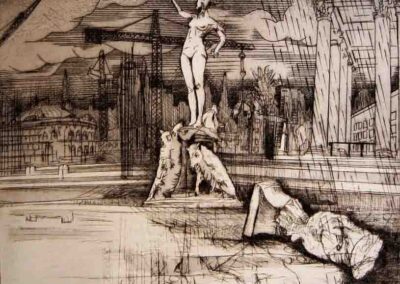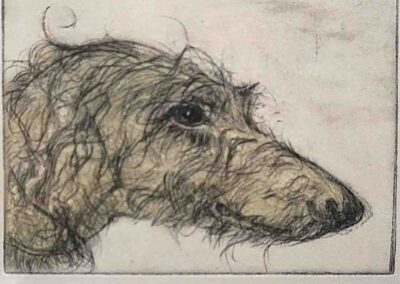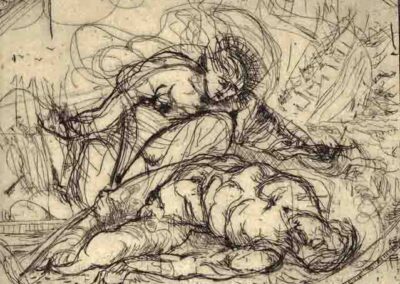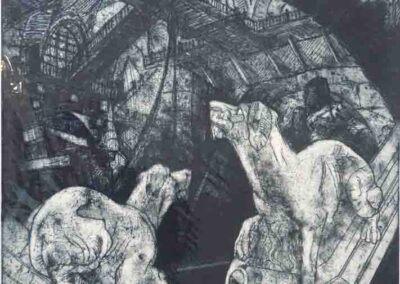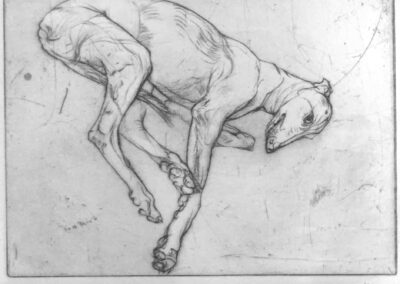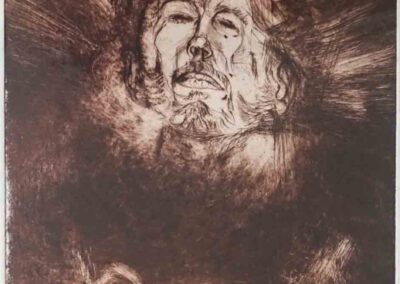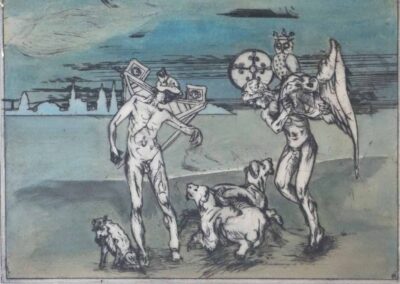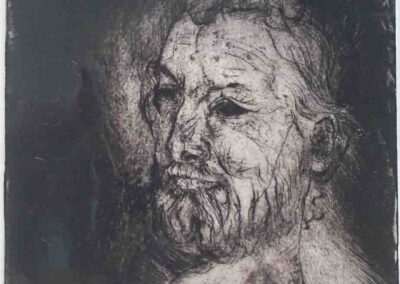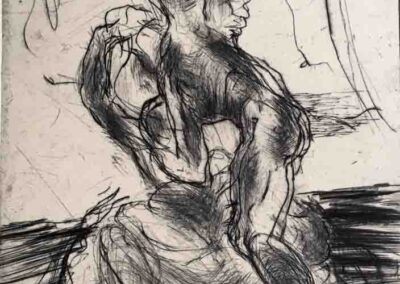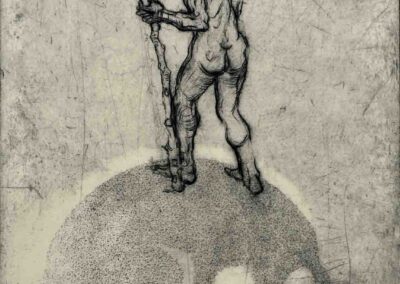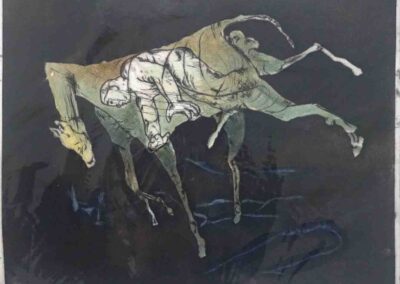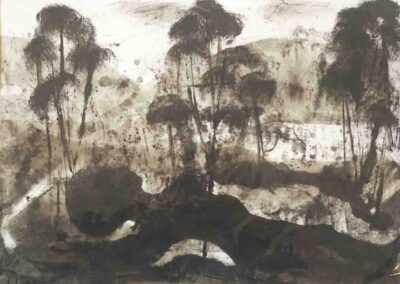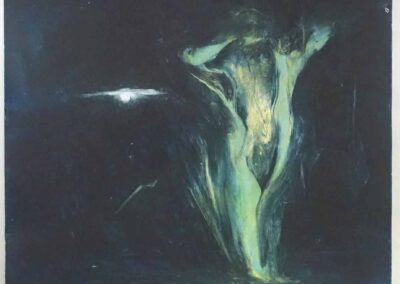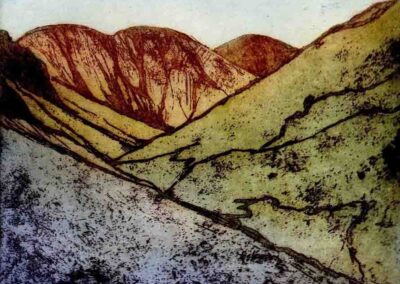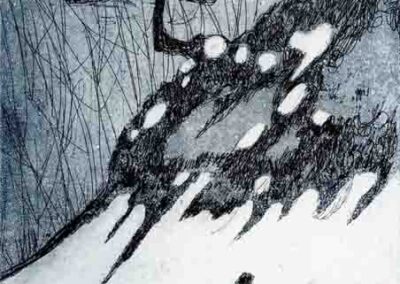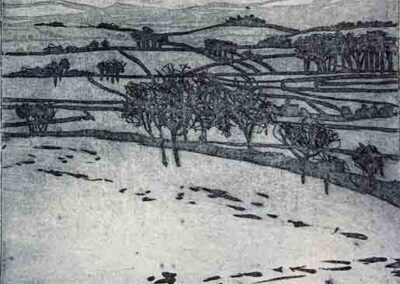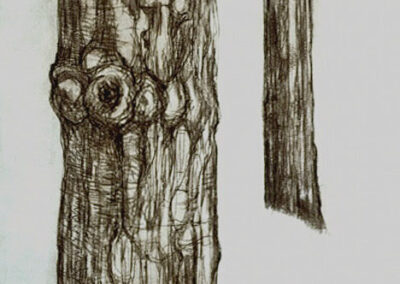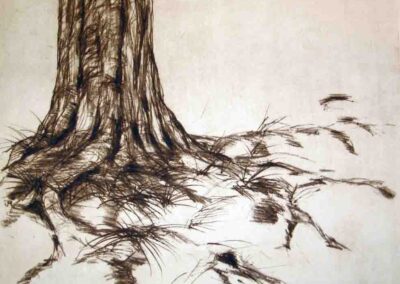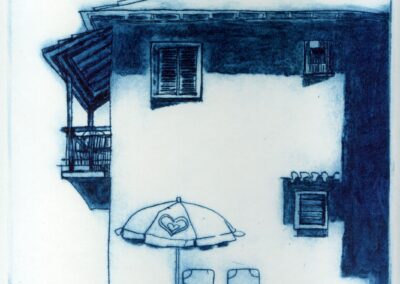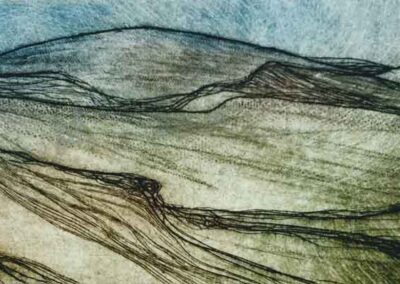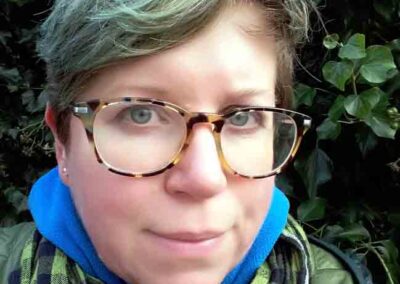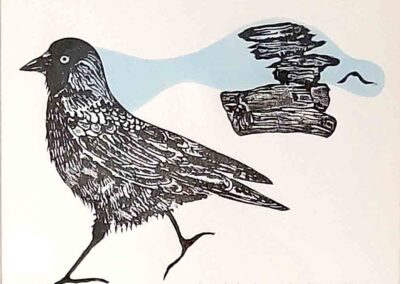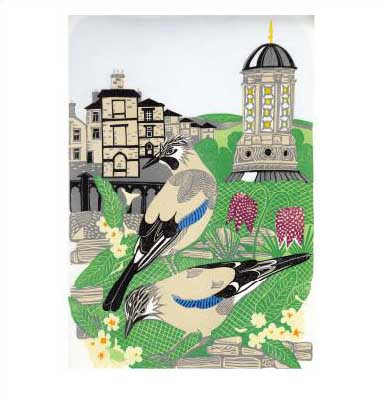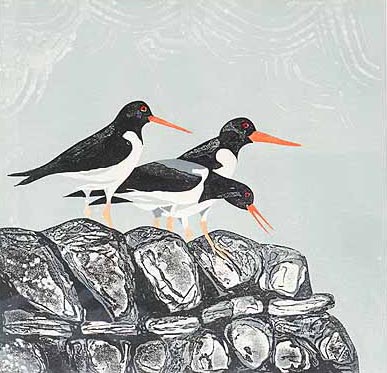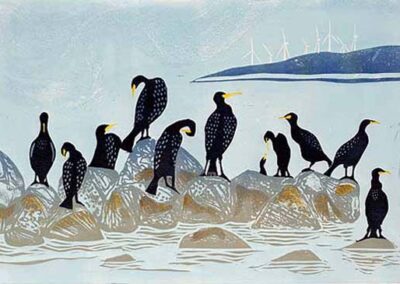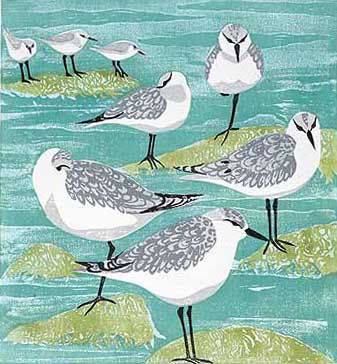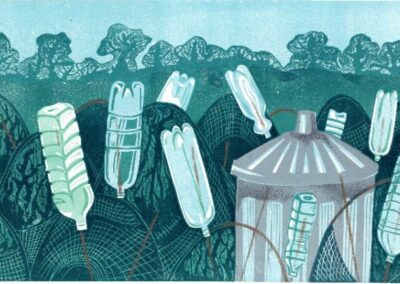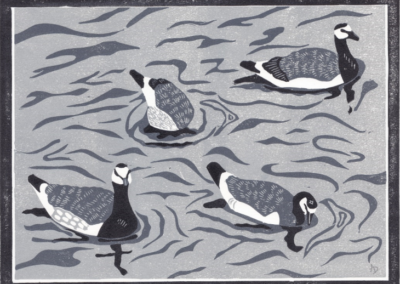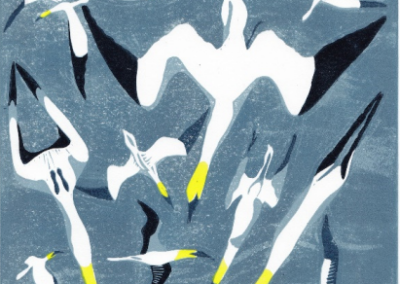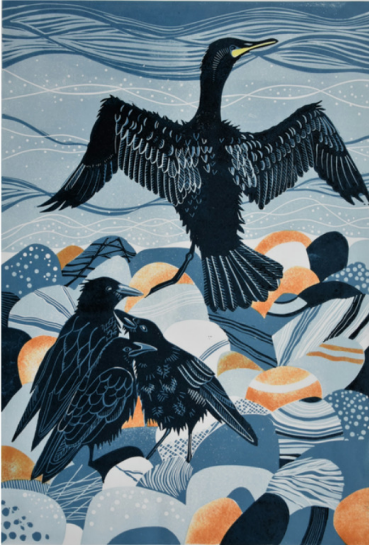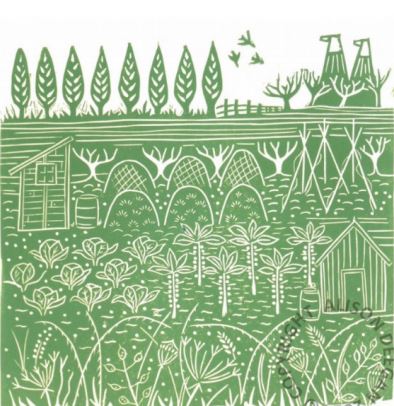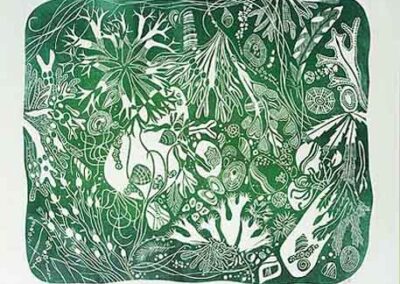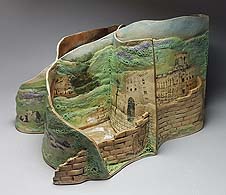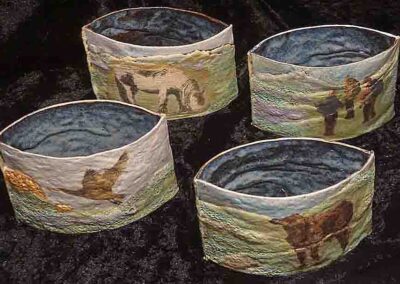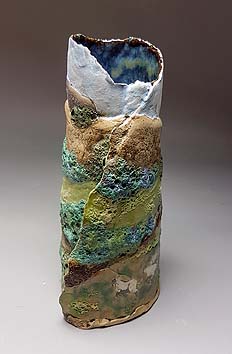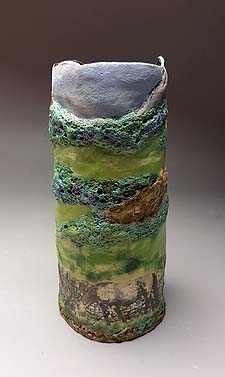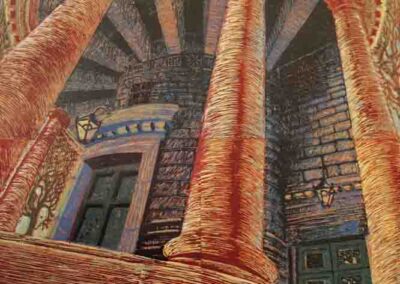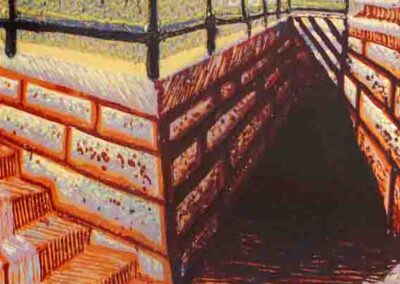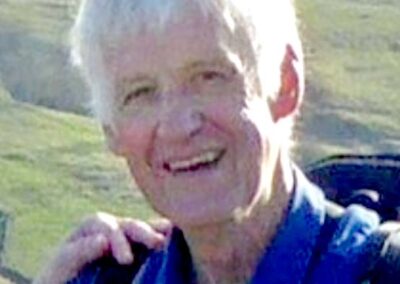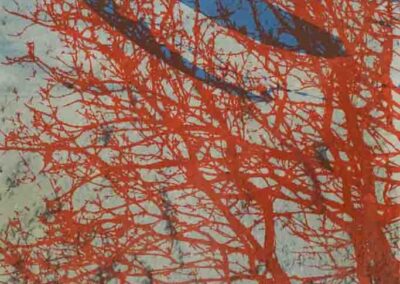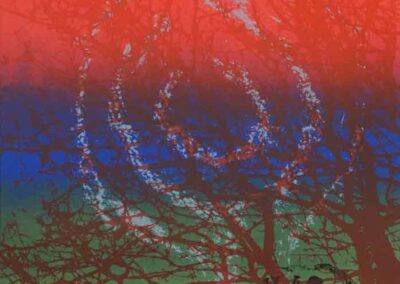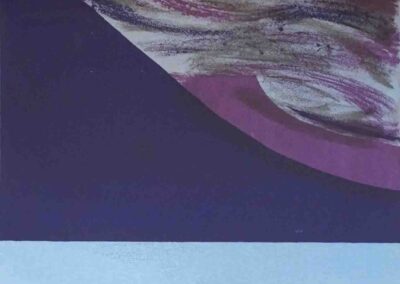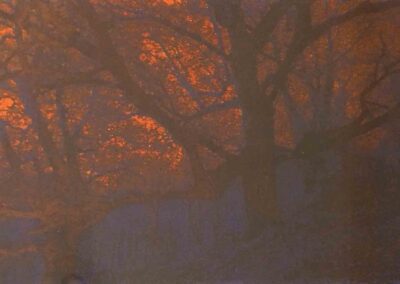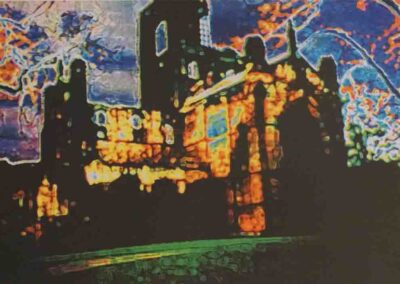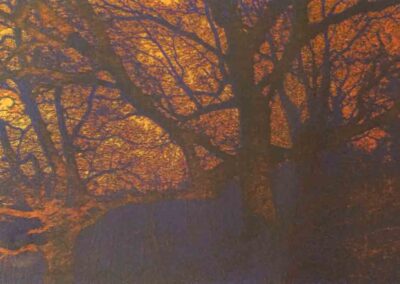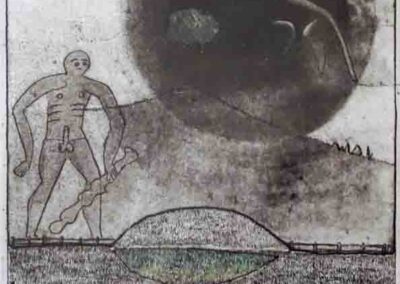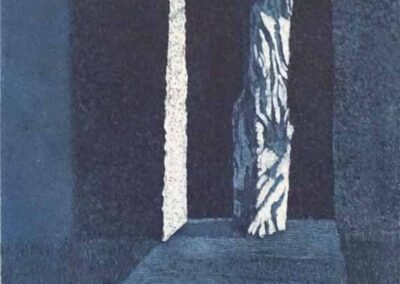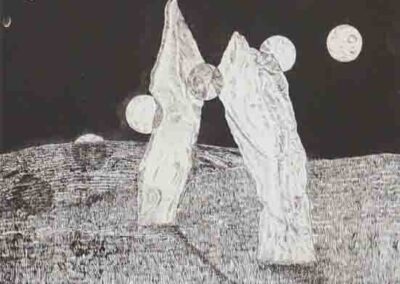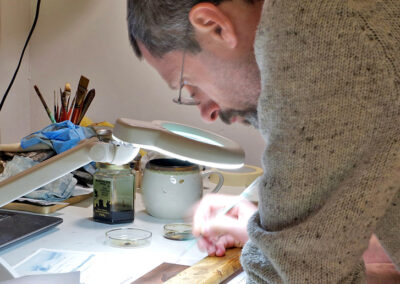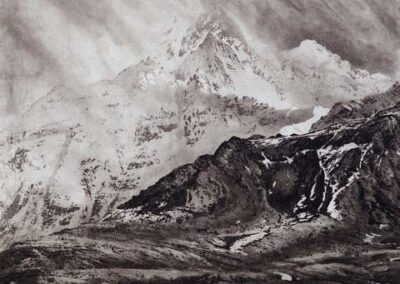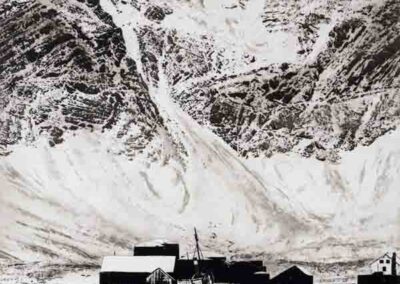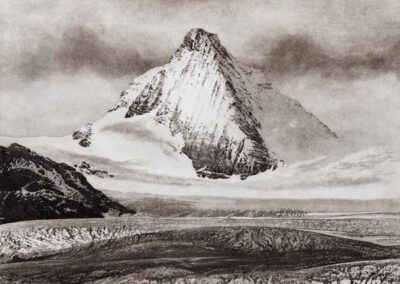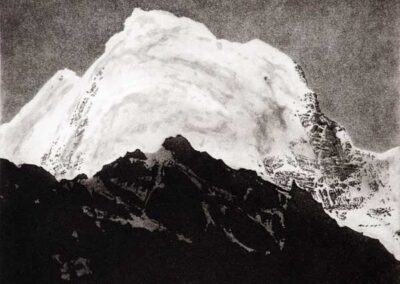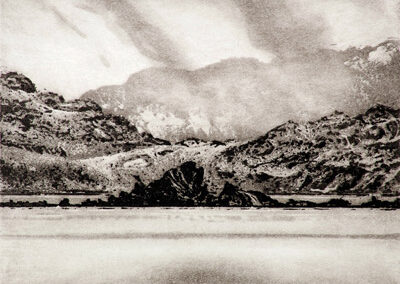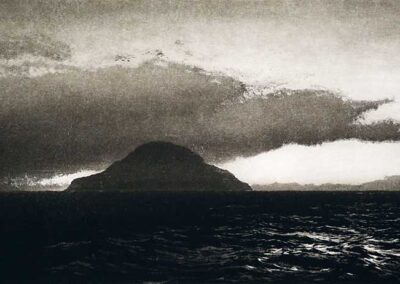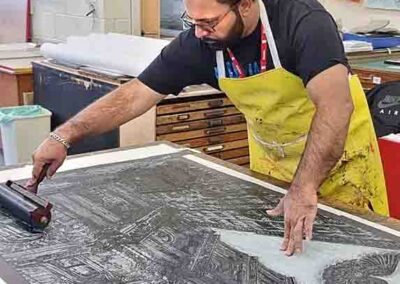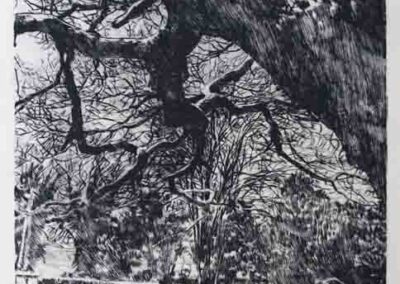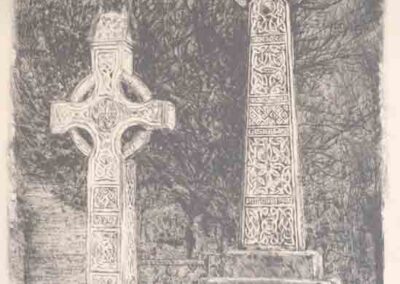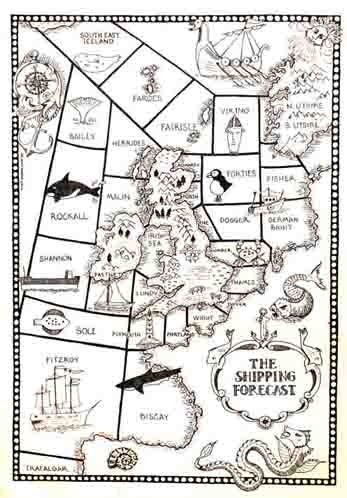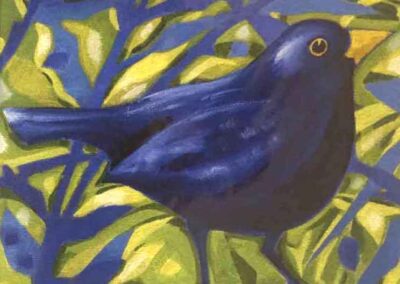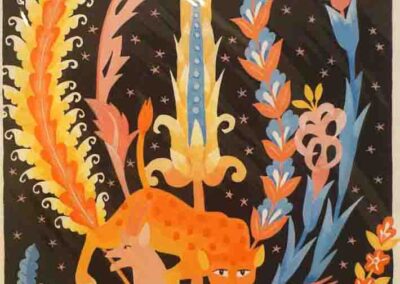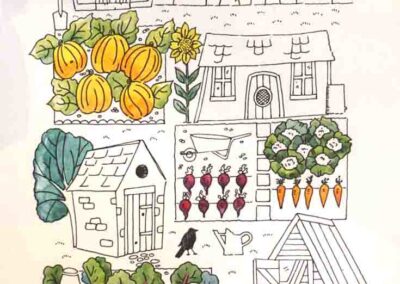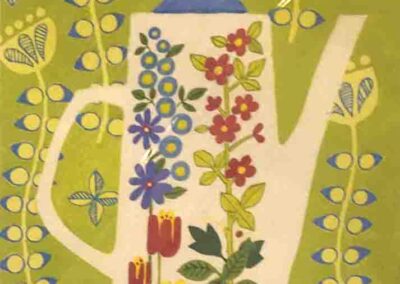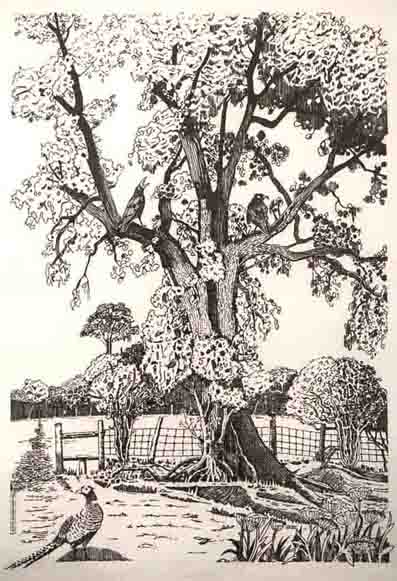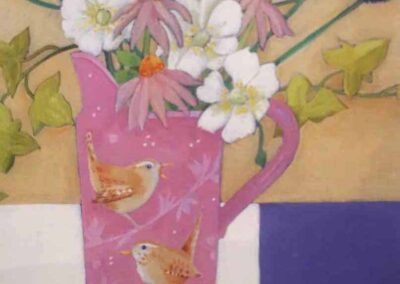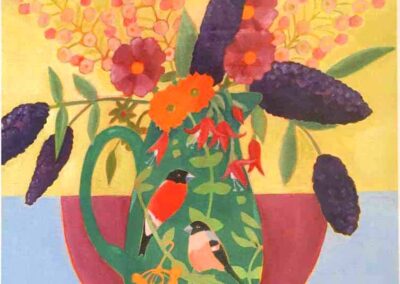A new exhibition at the Bingley Gallery showcases the work of printmakers from our region. Artist’s prints are a hugely important branch of the fine art world, though many people are confused between the hand-worked forms and the mass-produced prints which pass through a photographic process. The latter may be produced in carefully controlled limited numbers, but they lack the individuality, variability and scarcity of the traditional techniques that make them so appealing.
Many great artists including Durer, Rembrandt, Hokusai, Matisse, Picasso and Warhol produced prints, not merely as a means of increasing output, but because it provided a different expression of their creativity.
A multitude of processes add to the final effect: Sometimes bold blocks of colour, sometimes subtleties of tone through the use of acid etching or the fine, scratched in detail of needlepoint etching. As one of the exhibitors, Paul Hudson said of his work “Screen prints are a delight in the way one can manipulate screen images and colour from one print to another if so wished. They are to me the bolder statements which shout out from the wall, whereas etchings whisper their tales and you may need to listen a little more carefully”.
Don’t miss our Launch on Wednesday 15 February 7-9pm
Janine Denby Collography
Janine Denby trained in Graphic Arts at Leeds Metropolitan University and obtained a MA from Bradford University. She currently divides her time between teaching, running print workshops and printmaking in her studio in Halifax.
Janine has developed her own unique style of multi-coloured collography printing; overlaying numerous print blocks to produce highly textured, vividly coloured works celebrating the world around her. On-site drawings, paintings and photographs are used as the source material which are then transferred onto the initial print block using a variety of paintable textures including grout, pva glue, plaster and acrylic mediums. Blocks may be repeatedly test printed and re-worked, absorbing her experiences and feelings along with the paint. Over the past 30 years Janine’s work has focussed on the city at night depicting the dramatic interplay of light on architectural forms and reflections flickering elusively on wet ground. – an exciting time when the luminous pockets of intense light contrast dramatically with the dark shadows to create transient ‘stage sets’ in which figures play out their personal roles and daytime reality is replaced by a sense of magic and the unknown.
Mike Moor Drypoint
Born on a Derbyshire farm, Mike’s artistic training came initially from Grimsby, then Cheltenham School or Art before undertaking an MA in Painting and Printmaking at The University of Leeds. He has exhibited widely, undertaken commissions for as unusual subjects as wine bottle labels and a gothic horror book, contributed to the Erotic Review and was artist in residence at Cliffe Castle, Keighley. He now lives in Riddlesden, where his garden shed is a favoured workspace.
His main technique is drypoint etching, which he ‘enjoys for its visceral, tactile quality…. the sheer graft and resistance of the metal point cutting into the aluminium. Perhaps due to his farming experience animals feature frequently as subject matter, but he isn’t afraid to tackle deeper studies of the human condition. Another ingredient seems to be the influence of some of the great engravers of the past and many of his works have a classical style.
MORE IMAGES COMING SHORTLY
Mike Moor MM14 ‘Brzeska’s Wrestler and His Horse Afloat Above The Sleeping Town’ etching drypoint and watercolour unframed £175
June Russell Etching, Aquatint & drypoint
June is a fine art printmaker based in Bradford, who works from her studio at South Square in Thotnton, where she experiments with a wide range of print methods. ‘Although I have a very broad interest in landscape, it is the city and its environs that is the major focus of my work, and even my rural landscapes usually feature the marks of habitation’. In recent years, as a member of Inkers Printmaking Group, June has been involved in responses to urban and industrial museum collections, most recently Bradford Industrial Museum, and Bradford Textile Archive.
Alison Deegan Etched Linoprint
Alison worked on this small collection of bird lino prints through 2022. Traditionally, the surface of the lino is carved with a variety of tools to remove the areas where the ink is not wanted on the print. The results are bold and unambiguous, the ink is either absent or present.
However, old style hessian-backed linoleum, which is made from solidified linseed oil and other particles can also be etched. Caustic soda applied to the linoleum breaks down the proteins in the oil and eats into the surface. Once the etch is deep enough to escape inking with a roller the process can be halted, and any residues can be washed away.
Alison draws her designs onto the lino in melted wax using a tjanting, a tool used in batik dyeing. The wax resists the caustic soda leaving the lino beneath it unetched. By stopping the etch whilst it is still quite shallow some of the small particles in the lino still pick up the ink and transfer it to the paper. The overall result is more spontaneous, single colour prints have more nuance and texture and subtle transitions can be achieved where two or more colours are layered.
Alison Deegan AD06 ‘Two Jays at Saltaire’ Lino print 40x30cm framed £100 unframed currently out of stock
Alison Deegan AD32 ‘Oystercatchers at Cam Houses’ Lino Print 6of13 mounted to 40x40cm Currentlt out of stock
Alison Deegan AD25 ‘Down the Allotments’ Lino print 30x30cm mounted but unframed £35, also framed £65
Kath Bonson
Trying to find a 3-D artist to fit into our printmakers themed show, I realised that one of our ceraics artists, Kath Bonson, often uses screenprinting to transfer designs onto the flat plates of clay before they are then moulded into their final forms then fired at a high temperature . Dales scenery predominates in these works. Not sown are the small clay plaques all of which are a diffferent design.
For more of Kath’s Work click here
Kate Rawnsley Reduction Linoprint
Kate started her first creative job as a textile designer for Courtaulds in 1982, and then did a degree in printmaking and photography. After completing a degree she worked as a fine art lecturer at Bradford College for 25 years but is now happily retired, though very much still involved with print and design.
Kate’s work is autobiographical, and the 3 prints shown here are recent work, concerning the abuse of power. Initially motivated by events that resulted in a long period of work-related stress. The theme has been expanded to embrace all aspects of oppressive power, which is never far from us, with the architecture of Saltaire used to visualise the emotional state that we find ourselves in when abuse is present in ur lives.These lino prints employ the technique of reduction lino, this involves the process of cutting and layering many colours to produce a painterly effect.
Kate Rawnsley KR03 Saltaire United Reformed Church Pillars. Reduction Linocut 59x50cm framed to 79x74cm £650
Kate Rawnsley KR01 Saltaire United Reformed Church Stairs. Reduction Linocut 23x39cm framed to 42x60cm £195
Paul Hudson Screenprint and etching
Paul Hudson attended Bretton Hall College, near Wakefield and left there as a teacher of art, working first in Appleby, Cumbria, then at Pudsey Grammar School. He has lived in Headingley for nearly 50 years. Art was always a favourite subject at secondary school.. along with writing misspelt poems.
As well as printmaking, Paul has worked in ceramics, oil paint, watercolour and gouache. When his wife Sue, who was a weaver, died he added tapestry weaving as a homage to her memory. Paul is a member of Inkers, a printmaking group and the Aire Valley Arts Group which provides an opportunity to exhibit the full variety of pieces in various media to the public. Even at 73, he feels there are many areas of printmaking to be explored and greater depths to be fathomed in both in the processes of production and in expressing his imagination. As he explains ‘Screen prints are a delight in the way one can manipulate images and colour from one print to another if so wished. They are to me the bolder statements which shout out from the wall, whereas etchings whisper their tales and you may need to listen a little more carefully. In some pieces I am an archaeologist, uncovering an imagined truth, a trail of interpreted possibility; in others I am enjoying a memory of a time and expanding that. There is a lot of fiction!’
Ian Brooks
Ian’s work is rooted in landscape, capturing the sense of place, distinct to specific locations. During lockdown he focussed on images of the sub-Antarctic island of South Georgia, visited whilst undertaking oceanographic research for his academic research in climate science at the University of Leeds. Other images in this exhibition feature the moors around his home in Haworth – the result of sketches made during regular walks on the moors, often revisited in different lights and seasons.
Ian works primarily with the traditional etching techniques of sugar lift and spit-bite aquatint, The image is built up in layers of tightly-controlled drawing, and more abstract, loose, semi-random marks which mimic the textures of the landscape and maintain the energy of sketches made on location. The images are acid etched on copper plates, and hand printed in the artist’s home studio on fine-art printmaking papers.
Baldev Mehta Linoprint and drypoint
Baldev Mehta is a recent graduate of Bradford College and his linoprint of the Russell Law House in Little Germany was, remarkably, undertaken as a second-year project which was completed over a period of six months.
As a Bradford artist he has a great appreciation for the skill the stonemasons used in the construction of the City’s hugely ornamented Victorian buildings and chose linoprint as the most appropriate method to represent this. However, one snag was the lack of large sheets of artist’s grade block material, so industrial flooring lino was used instead, which proved much harder to cut. From the start his intention was to capture a ‘walking’ perspective of the building, rather than an architectural view. At 1.5m tall, it’s a monumental work, all the more impressive for being only his second use of the technique. Two further pieces of Baldev’s work are both based on views of Undercliffe cemetery and use the drypoint technique.
Jo Whitehead Digital Giclee Prints
-something very different, but beautiful
They say never to mix digital prints and hand-made artists’ prints. They are, indeed, very different products. Jo is, foremost, a talented painter, but chooses to produce inexpensive, un-limited reproductions of her work for sale so that more people can enjoy them. The original work is digitised (you can see the dots at high magnification) by photography or scanning and then exactly similar digital copies can be printed out as needed. The Giclee printing process is not dissimilar to an inkjet printer, but operates at a higher resolution and uses pigment-based inks rather than the dye-based inks found in lower-cost inkjets, giving greater resistance to fading and a longer lifespan to the work.
We’re pleased to have a small collection of unlimited digital prints and cards featuring Jo’s work, and we do hope to see examples of her gorgeous original artwork in our Summer Exhibition.
IMAGES Coming shortly

